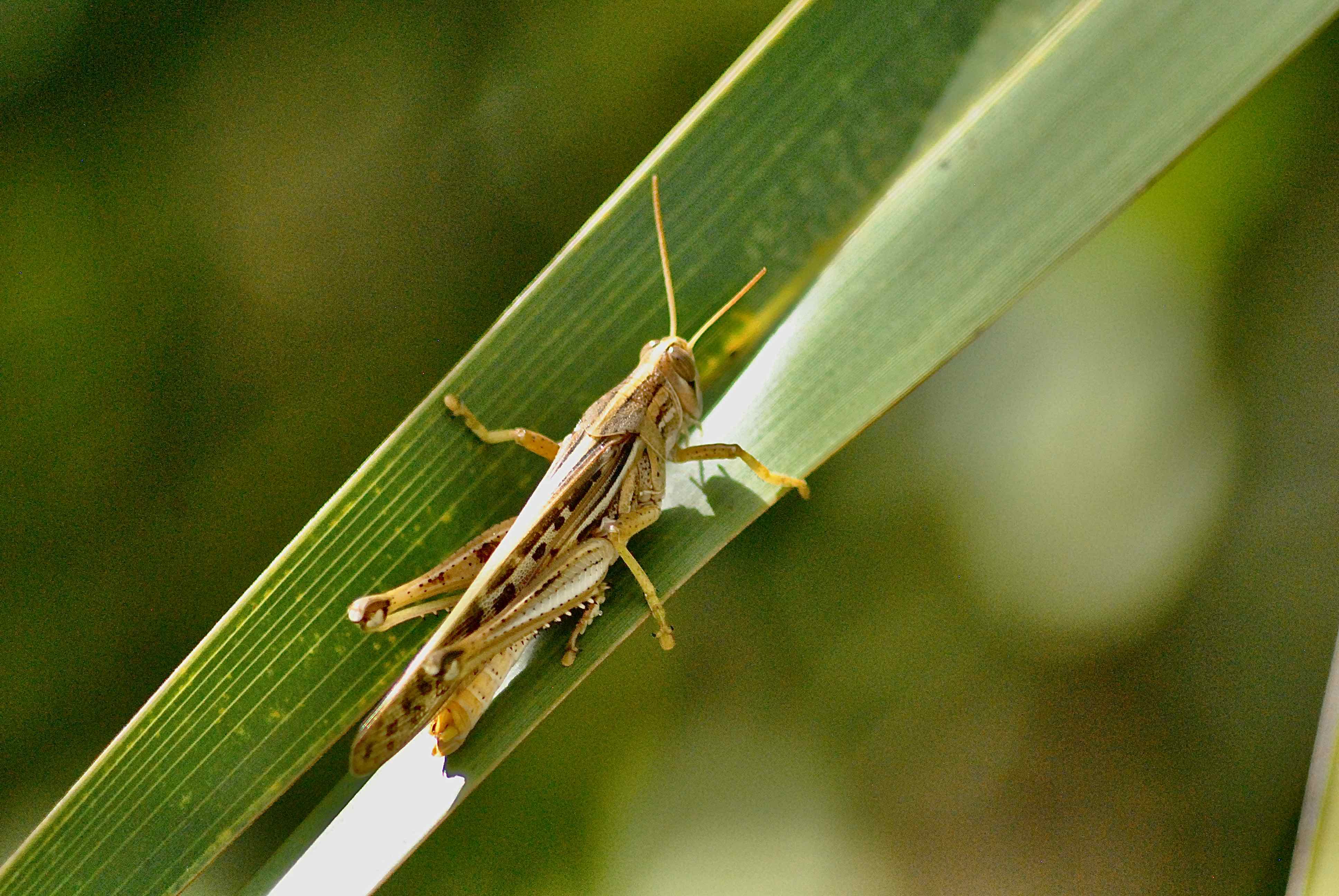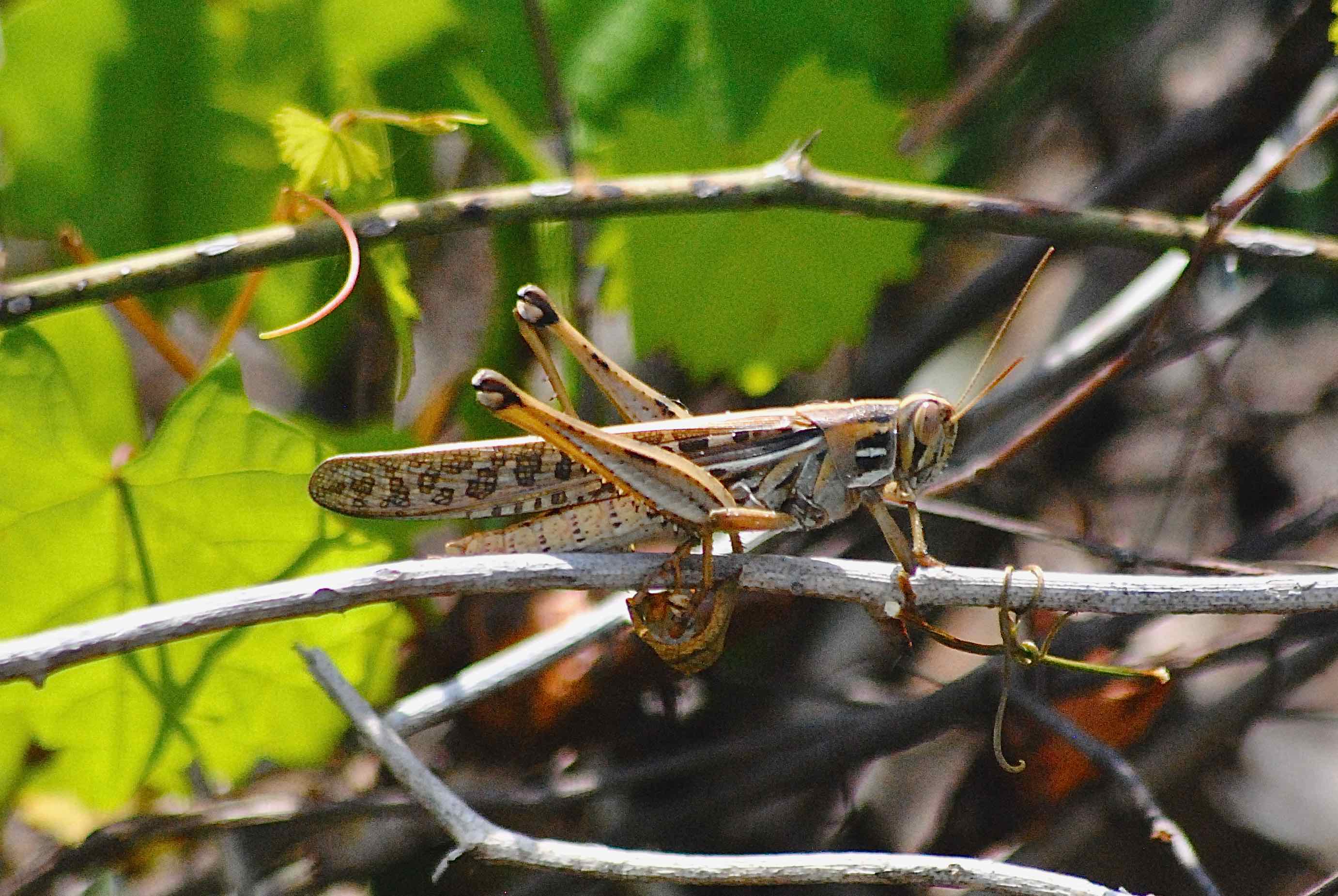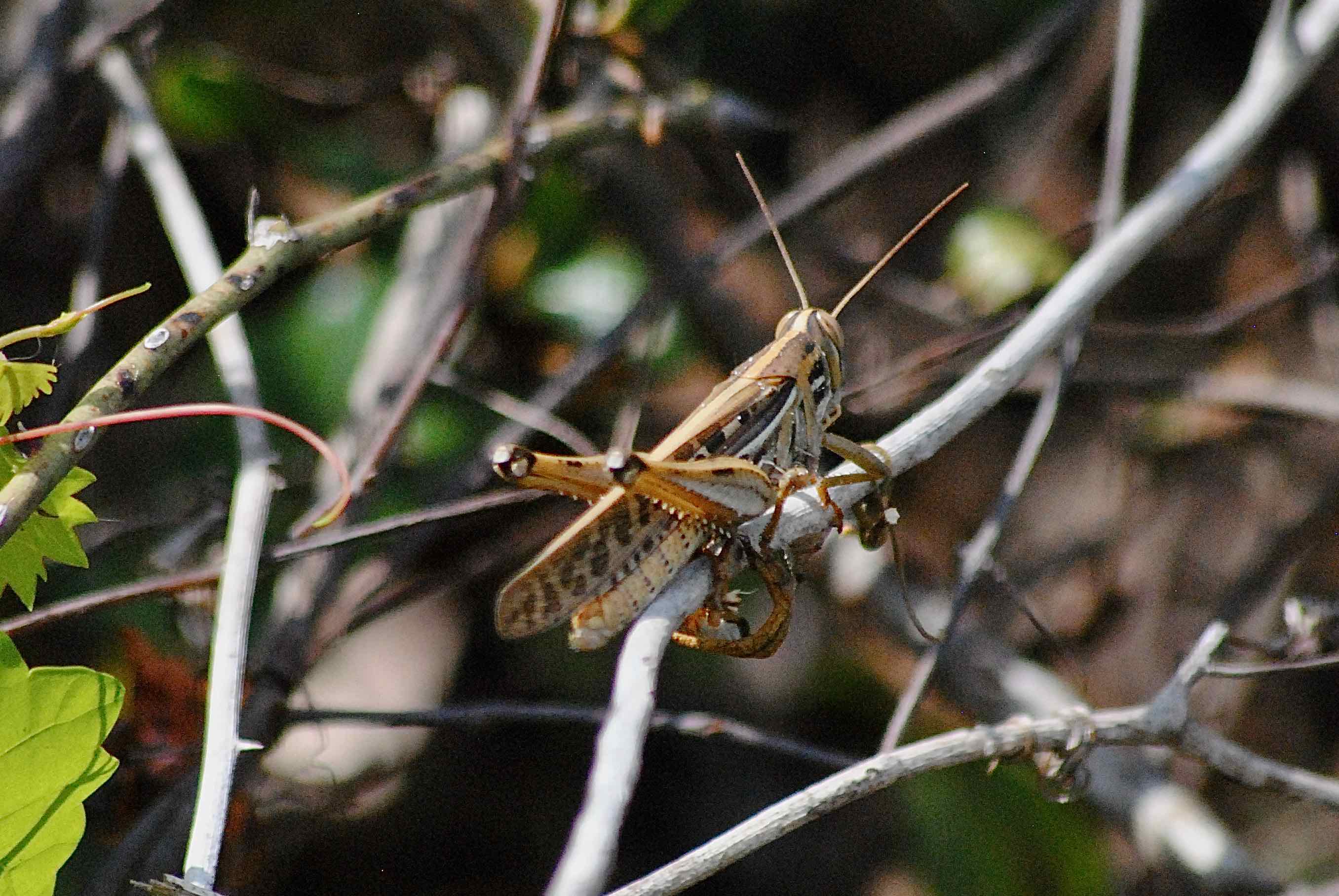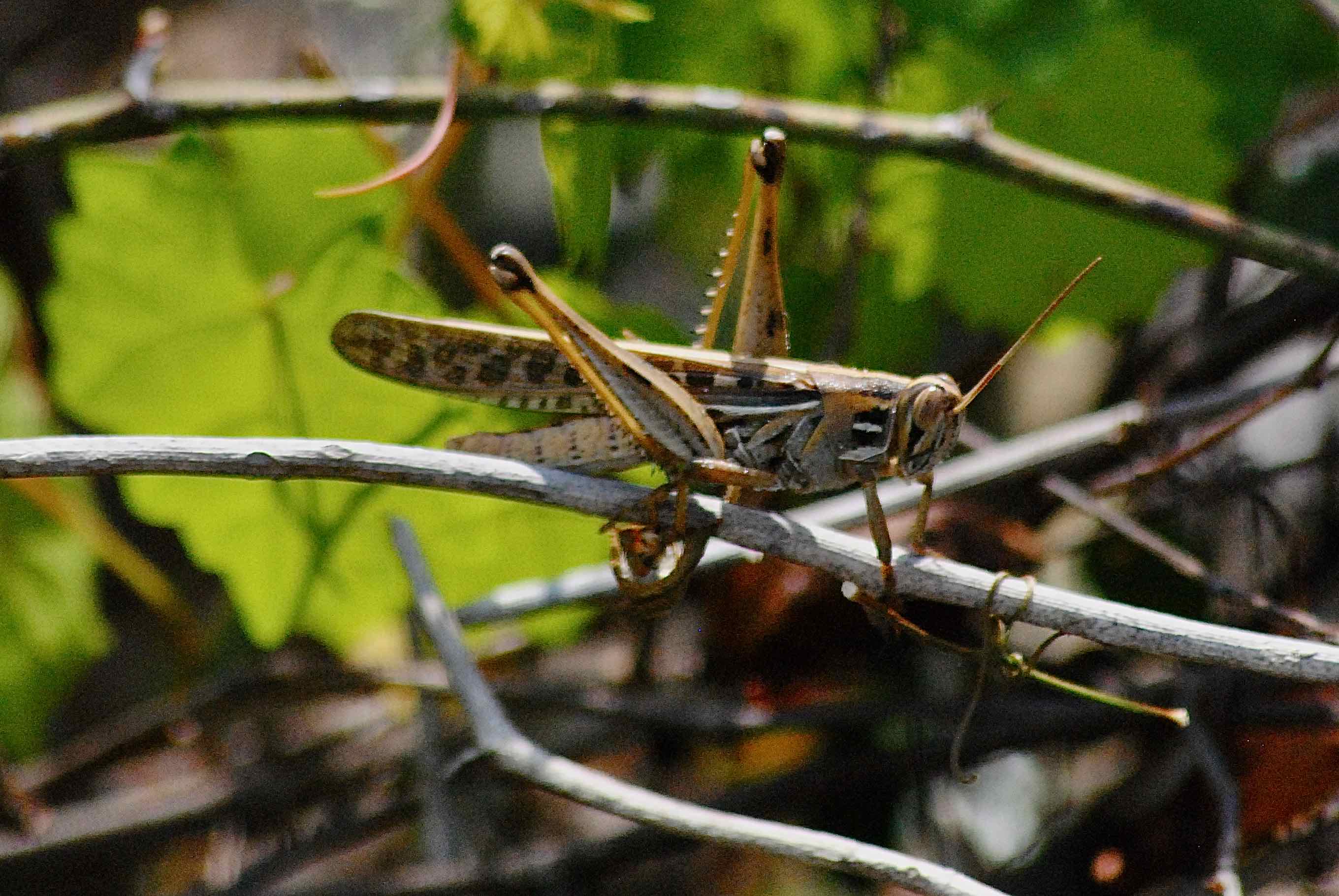
American bird grasshopper, photographed at Pondhawk Natural Area, Boca Raton, Palm Beach County, in August 2013.
The American bird grasshopper, Schistocerca americana, is among the more common grasshoppers found east of the Great Plains. It's also fairly easy to identify.
The American bird is commonly found throughout Florida, in fact all of the eastern United States as far north as Iowa and Pennsylvania. Its range extends into Mexico and the Bahamas. It inhabits fields and open woodlands, where they'll bask in the sun and munch on vegetation. Adult bird grasshoppers will roost in nearby trees and shrubs at night.
They vary in color according to age, first pinkish or red when young, turning to a mix of creams and browns ranging from light to nearly black as they mature. Males are smaller than females, ranging between 1.5 inches long and 1.75 inches; females between 1.6 inches and 2.1 inches. They have a cream-coored stip that runs between the head and forewings and are strong flyers as might be guessed by their name.
Bird grasshoppers produce two generations per year; in Florida, one generation will emerge between February and May, the second between August and September. Up north, the first generation emerges little later, between April and May. Throughout their range, they'll winter over as adults.
Females will deposit their eggs by pushing their ovipositor — the very back end of their abdomen — into the ground. Each cluster can have between 60 and 80 eggs bound together by a frothy substance. A female may deposit as many as three clusters.The eggs hatch in three to four weeks; the emerging nymphs will go through five or six stages, or instars, before becoming full-fledged adults.
They'll regulate their body temperatures by climbing up or down on a plant and by moving in and out of the sun. The number of stages they go through varies according to population. If the bird grasshoppers are few in number in a particular locale, a nymph will go through five stages before maturing; six if the population density is high.
American bird grasshoppers can be something of an agricultural pest when in large numbers they settle in a cultivated field. Older nymphs have voracious appetites and do most of the damage to vegetation; older adults not as much. In Florida, young citrus trees are particularly vulnerable. When these grasshoppers eat, they regurgitate a certain group of fatty acid chemicals called caeliferins. Scientists aren't sure what what happens when they do this. It could be a signal for other bird grasshoppers to come; it's also possible it could trigger the plants they're munching on to release chemicals of their own that attract the natural enemies of the grasshoppers.
American bird grasshoppers are vulnerable to a rather bizarre malady called summit disease. It's caused by a fungus, Entomophaga grylli. Infected grasshoppers will climb to the top a plant and grasp it with their legs literally in a death grip. They die there but continue to hold onto the plant until they disintegrate, all the while releasing spores that will infect another victim.
American bird grasshoppers are members of Acrididae, the short-horned grasshopper family. Other common names include American grasshopper and American locust.



